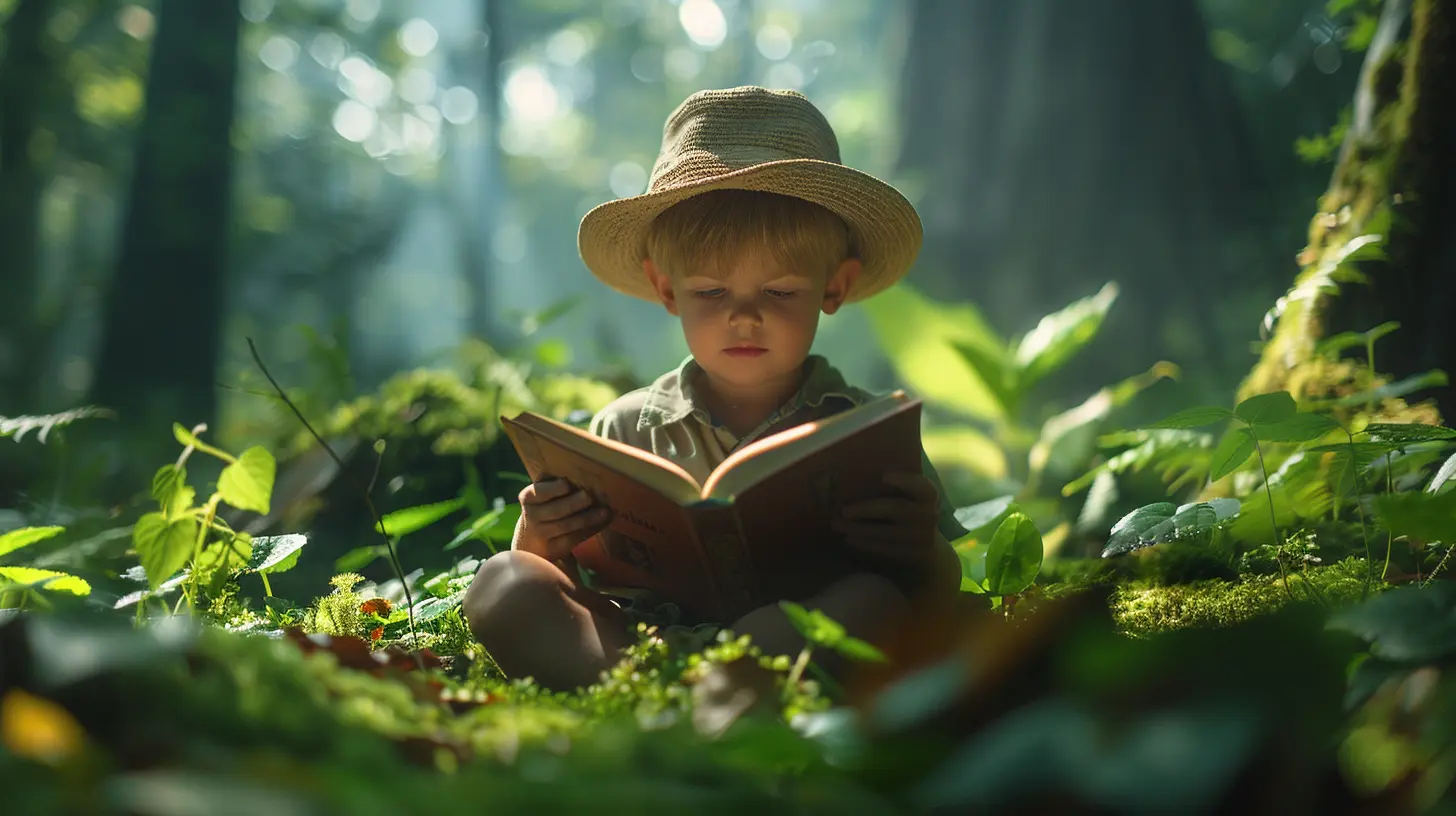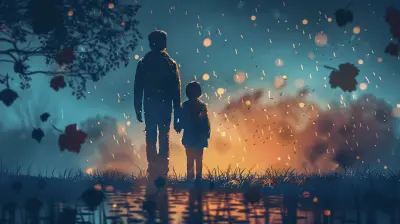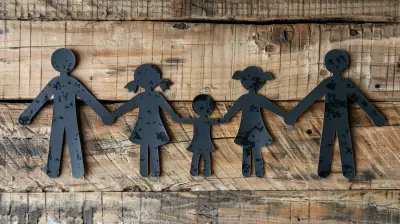The Role of Adventure in Children’s Books: Sparking Creativity
28 June 2025
Adventure and children’s books seem to go hand in hand, don’t they? From exploring enchanted forests to embarking on pirate ship voyages, adventure is often at the heart of many captivating children’s stories. But have you ever stopped to think about why adventure plays such a pivotal role in these books? Why, time and again, do authors weave tales of daring quests, magical lands, and brave protagonists into stories for young readers?
Well, it's not just because kids love a good thrill (though that's definitely part of it). Adventure in children’s books serves a deeper purpose. It’s a tool, a spark that ignites creativity, encourages problem-solving, and teaches invaluable life lessons. In this article, we’ll dive into why adventure is so essential in children’s literature and how it unfolds countless possibilities within a child’s imagination.
Let’s set off on this adventure together, shall we?

Why Do Kids Love Adventure in Books?
Children are naturally curious. They’re hungry for the unknown, always ready to explore, discover, and question the world around them. But in reality, the opportunities for grand escapades can be limited. After all, they're not yet old enough to climb Mount Everest or sail the seven seas! This is where books come in.Reading an adventurous story allows kids to step outside their everyday experiences without leaving their room. They can become knights, pirates, astronauts, or fairy-tale princesses. Adventure books enable children to experience imaginary worlds where the rules are different, the stakes are high, and the excitement never ends. And let’s face it, who wouldn’t be drawn to that?
But it’s not just about the lure of excitement. Adventure stories are also filled with elements that engage a child’s mind and foster their love for stories. Suspense, unexpected twists, and mystery grab their attention and keep them turning the page.
Adventure as an Escape
For many children, especially those who may be dealing with challenges in their real lives, adventure books offer an escape. They provide a way to experience freedom and possibilities far beyond the limits of their daily routines. When a young reader picks up a book that takes them on a dragon-hunting quest or an epic space mission, they get a break from reality—a refreshing mental escape where the only boundary is their imagination.
Adventure Books: Fuel for Creativity
Let’s think about this for a second: what happens when a child reads about a magical land with creatures that puff out clouds or a fantastical underwater city where mermaids rule? Their imagination fires up, right? That’s no accident. Adventure books are like the kindling that sparks the fire of creativity within children.Imagination-Driven Problem Solving
One of the key benefits of adventure in children’s books is its ability to stimulate creative problem-solving. In books, the young protagonists often face challenging situations—trapped in a castle, lost in a jungle, searching for a hidden treasure—and they must use their wits, courage, and imagination to solve the problem.The child reader, drawn into the story, begins to imagine how they would tackle the obstacles themselves. What would they do if they were surrounded by hungry wolves or needed to escape a locked room with only a paperclip and a ball of string? These scenarios prompt kids to think outside the box, developing critical thinking skills that are beneficial in real life. Adventure books teach kids that there’s always a solution, even if it requires a bit of creative thinking.
Creating Worlds of Their Own
Children don’t just passively consume the worlds within adventure books—they actively engage with them. As they read about distant lands or magical kingdoms, they start imagining their own fantastic realms. Many children who are avid readers often develop a love for storytelling themselves. Whether they write stories, draw maps of imaginary lands, or role-play as characters from their favorite books, adventure books inspire them to become creators.Think of an adventure book as a catalyst for endless “what-ifs.” What if the sky was green and clouds were made of candy? What if animals could talk? What if you could fly to the moon in a hot air balloon? These open-ended questions are the seeds from which creativity grows.

Life Lessons Embedded in Adventure Stories
It’s not just the excitement and creativity that makes adventure so essential in children’s books. These tales are often packed with important life lessons too. Every time a character in an adventure story faces a challenge, overcomes a fear, or makes a difficult decision, there’s a lesson to be learned. And kids pick up on these lessons, even if they don’t realize it at the time.Facing Fear and Building Courage
Adventure involves risk. In most children’s adventure books, the protagonist—usually a child or young person—faces some level of danger or uncertainty. Whether it’s slaying a dragon or standing up to a school bully, these stories often revolve around characters overcoming their fears.By reading about these acts of bravery, children learn that fear is a natural part of life and that the key to success is not to avoid fear but to face it head-on. Adventure books empower kids to confront their anxieties, whether it’s climbing a tree for the first time or speaking up in class.
Think of classic stories like The Lion, the Witch, and the Wardrobe or Harry Potter. Both stories feature protagonists who aren’t necessarily the strongest or bravest at the start. Yet throughout their journeys, they confront their fears and grow in courage. Children reading these stories are subtly taught the importance of resilience, bravery, and persistence.
Overcoming Challenges
Along with courage, adventure stories emphasize perseverance. Characters often face seemingly insurmountable obstacles. But the important takeaway is that they don’t give up. They keep pushing forward, no matter how difficult the journey becomes.This teaches kids a valuable lesson: challenges are a normal part of life, but with determination and hard work, they can be overcome. These ideas of grit and perseverance are powerful messages wrapped in a thrilling adventure—lessons that kids can carry into their academic, social, and personal lives.
Valuing Teamwork and Friendship
Adventure stories are also a great medium for showcasing the power of teamwork and friendship. Rarely do protagonists complete their quests alone. Whether it’s Frodo and Sam in The Lord of the Rings or Harry, Ron, and Hermione in Harry Potter, adventure stories often involve a group of friends working together to solve problems and achieve their goals.Through these stories, children learn the importance of cooperation, communication, and the role that trusted friends play in overcoming obstacles. The bonds forged during an epic journey teach kids about loyalty, trust, and the importance of collaboration — lessons that are essential in developing healthy social relationships.

The Enduring Appeal of Classic Adventure Stories
For decades, stories of grand adventures have captured the imaginations of young readers. Think of timeless classics like The Adventures of Tom Sawyer, Peter Pan, or Alice’s Adventures in Wonderland. These stories continue to resonate because the themes of exploration, risk, and discovery are intrinsically linked to childhood.Children, after all, are constant explorers—they are adventurers in their own right, navigating a world that is often unfamiliar and mysterious. Adventure books tap into this natural curiosity by giving them a mirror in which they can see themselves. And while the landscapes of these adventures may change—from enchanted forests to alien planets—the core message remains the same: with bravery, wits, and a bit of imagination, extraordinary things can happen.
Modern-Day Adventure Books: Expanding Horizons
While classic adventure books remain favorites, modern children’s literature has expanded the scope of adventure stories in many exciting ways. Today, there’s an increasing emphasis on diverse voices and perspectives within adventure narratives. We’re seeing heroes from different cultures, different backgrounds, and different abilities take center stage in their own epic quests.These stories not only celebrate adventure but also broaden children’s understanding of the world, enhancing their empathy and appreciation for different experiences. Nowadays, adventure books don’t just transport kids to mystical lands; they also introduce them to different ways of thinking, helping them grow into more compassionate and thoughtful individuals.
Conclusion: Adventure Books Are a Gateway to Growth
Adventure in children’s books is more than just entertainment. It’s a critical element that fosters creativity, teaches life lessons, and encourages personal growth. Whether it's the thrill of an epic quest or the challenge of overcoming adversity, these stories offer children a powerful space to imagine, dream, and learn.So, next time your child picks up an adventure book, remember that they’re not just enjoying a wild ride—they’re also learning how to navigate life's challenges, broaden their imagination, and develop into more resilient and creative individuals.
Now, who’s ready for the next great adventure?
all images in this post were generated using AI tools
Category:
Childrens BooksAuthor:

Tara Henson
Discussion
rate this article
1 comments
Dahlia McGuffin
What a delightful read! Adventure in children’s books truly ignites imagination and creativity, nurturing young minds to explore and dream. Thank you for sharing!
July 6, 2025 at 3:45 PM

Tara Henson
Thank you for your kind words! I'm thrilled to hear that you enjoyed the article and share my passion for the power of adventure in children's books. Happy reading!


